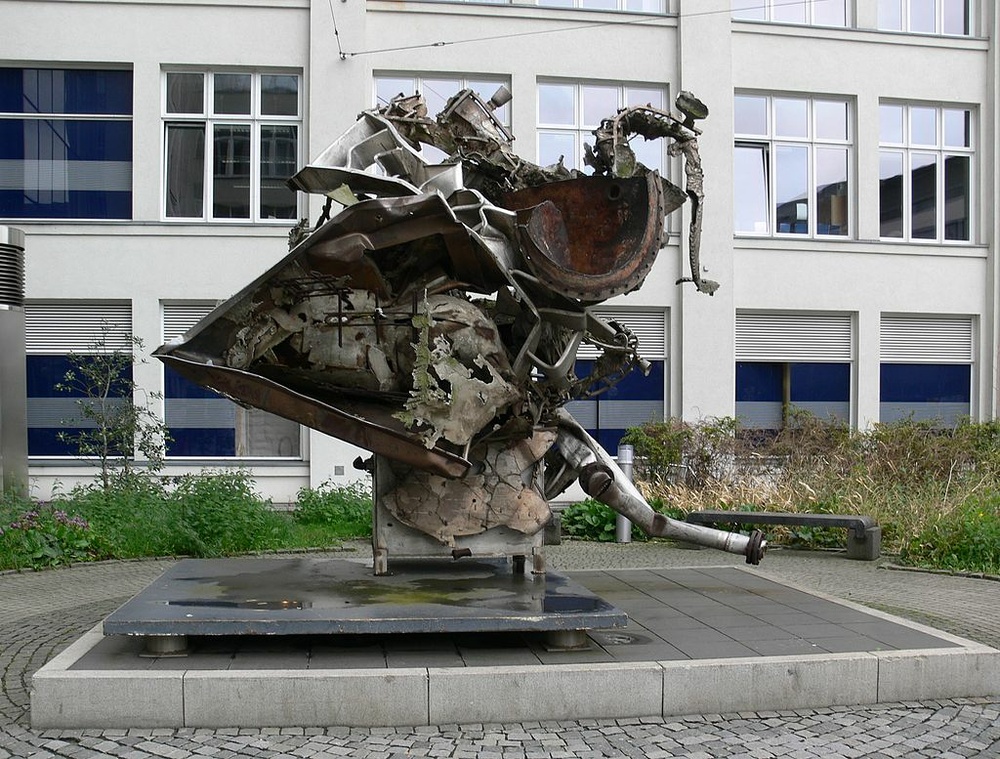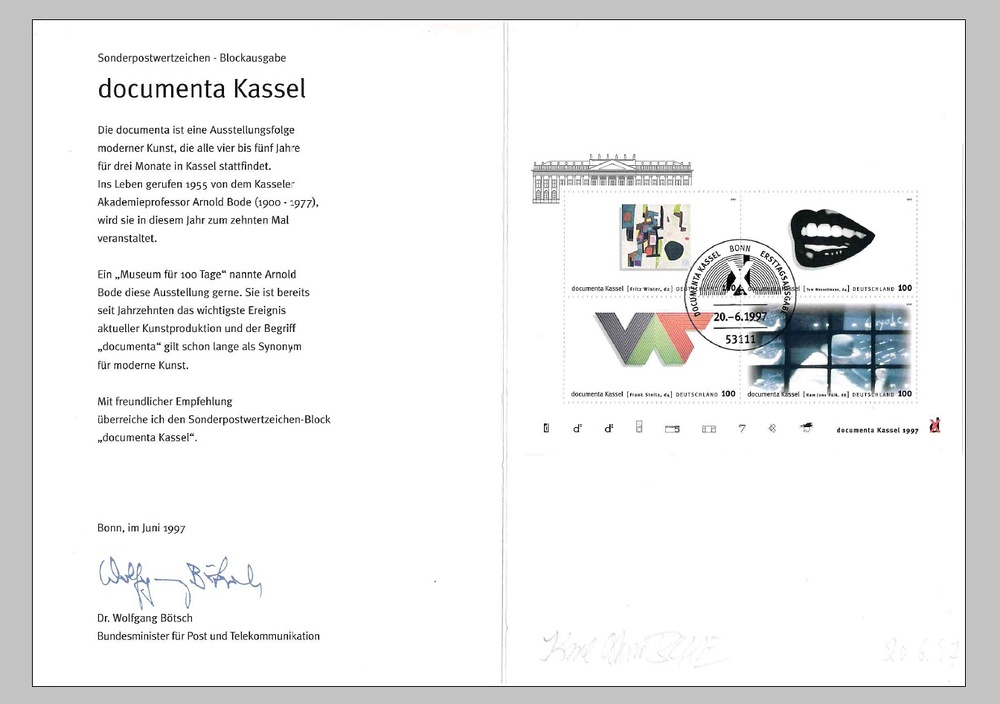Frank Stella (1936–2024)

Frank Stella's sculpture "Fishskill" (1995) on Ernst-Abbe-Platz, the main campus of the University of Jena (photo: Public Domain)
"All I want anyone to get out of my paintings is the fact that you can see the whole idea without any conclusion . . . What you see is what you see." (Frank Stella, interview with Bruce Glaser, 1966)
US- American artist Frank Stella died on May 4 aged 87. He entered the New York art world in the late 1950s and conquered it in a flash. After studying painting, history and art history at Princeton University (1954-1958), as a first step he worked as a house painter, but his first series of minimalist, geometric artworks - his "Black Paintings" (1958-1960) executed in enamel paint - made him instantly famous: in 1959, at the age of 23, Stella was included alongside artists such as Jasper Johns and Ellsworth Kelly in the "Sixteen Americans" exhibition at the Museum of Modern Art in New York. In 1970, at the age of 33, he was the youngest artist to ever have a retrospective at MoMA.
In his long career, he underwent numerous changes of style and reinvented himself time and again. The groundbreaking development of the "Shaped Canvas" - a support whose outer form is derived from its interior design - was followed consequently by an foray into threedimensional space: "Sculptures are paintings that stand on their own." (Frank Stella)
From the 1970s onwards, opulent reliefs, sculptures and architectural designs replaced the characteristic flatness of his art of the 1950s and 60s (Clement Greenberg's much-praised "flatness"); the monochrome of his early work was replaced by expansive pictorial objects and material assemblages in luminous colors.
As a high-flyer, pioneer and influential figure of his generation, Frank Stella was represented twice at the documenta in Kassel: in 1968 as part of documenta 4 and in 1977 as part of documenta 6.
His shaped canvas painting "Quathlamba" (1964, metal powder and polymer emulsion on canvas, 195 x 414 cm, privately owned), shown in Kassel in 1968, circulated on the occasion of documenta 10 (1997) as a special 100 pfennig stamp issued by Deutsche Post. Subsequently, the work was temporarily distributed by post, reduced in scale, and is kept in the documenta archiv in the same format in multiple versions (docA AA d10, 84a).

Special postage stamp for documenta 10 (1997) with motifs by Fritz Winter, Tom Wesselmann, Frank Stella and Nam June Paik, design: Sybille and Fritz Haase, docA AA d10, 84a
